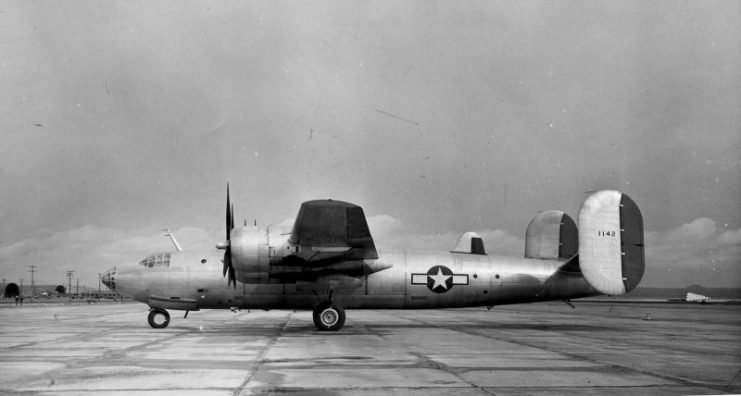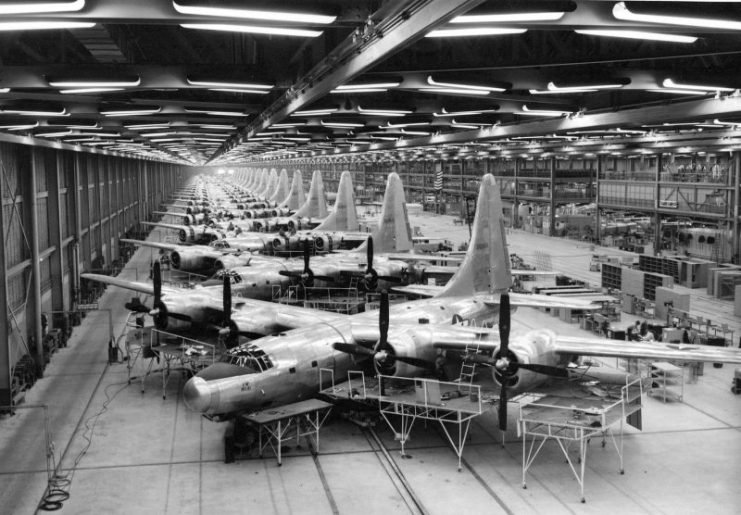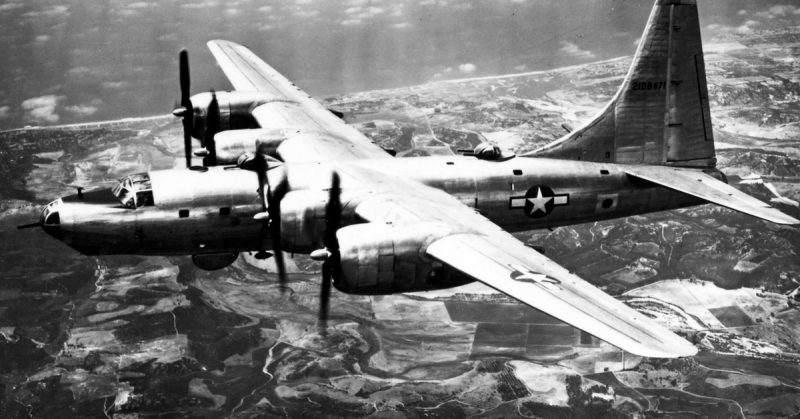The most expensive weapons program conducted by the US military during WWII was not the Manhattan Project which developed the atomic bomb. That distinction belongs to the giant bombers that carried the nuclear weapons during the two attacks on Japan: the Boeing B-29 Superfortress. The money was spent to develop an advanced plane that could carry large payloads over long distances at high altitudes.
Mostly forgotten is the rival to the B-29, the Consolidated B-32 Dominator. Developed by the same company that produced the B-24 Liberator, the B-32 was to be the fallback if the B-29 failed to live up to expectations. Since the B-29 was everything the military had hoped it would be, the B-32 was deemed unnecessary. Consolidated still manufactured over one hundred B-32s which were deployed in the middle of 1945. It does have its own distinction as Dominators took part in the final US air battle of WWII – unfortunately, fought after the war had ended.
The program to develop a super heavy bomber began before the Japanese attack on Pearl Harbor.
The development of the B-32 fell behind Boeing’s work on the B-29, although it matched the B-29 in many important measurements such as speed and number of crew needed.
Where the B-29 succeeded over the B-32 was its pressurized fuselage. Because Consolidated ran into technical difficulties and scrapped their implementation, the Dominator was considered a low to medium altitude bomber while the B-29 was able to climb to high altitudes.

What the B-32 had going for it, though, was speed and distance. It was able to reach 3,800 miles (20% more than the B-29) and keep a cruising speed of 290 miles per hour (vs. 230 miles per hour for the B-29). The B-32 also had reversible-pitch propellers and thick Davis wings that it got from the earlier B-24; making the plane easier to land than the B-29.
Still, the Army Air Corps found the performance of the B-29 to be acceptable, so they ordered only three B-32s. They were used in operational testing by the 5th Air Force and transferred to the 386th Bombardment Squadron. They were used in raids on the Japanese in the Philippines and Formosa (now known as Taiwan).
In July of 1945, the 386th was fully outfitted with B-32s. In August the squadron was redeployed to Okinawa where they conducted photo reconnaissance over Japan. On August 15, Japan’s Emperor Hirohito announced his country’s surrender and ordered Japanese troops to stop their resistance. The Army Air Corps continued photo surveillance to ensure compliance with the terms of surrender.
But some Japanese fighter pilots believed the US bombers were attacking Tokyo in violation of the surrender and so felt the need to protect their country. Other fighters claimed they were angered when they saw US bombers flying unchallenged over their homeland considering the amount of damage US bombs had caused there.

Indeed, US forces had caused massive damage on the ground in Japan. On March 9, 1945, B-29s from the US dropped thousands of cluster bombs with napalm over working-class residential areas of Tokyo. The resulting firestorm was intense enough to suck the air out of people’s lungs and melt concrete. It killed about 100,000 civilians – more than the death toll of either atomic bombing.
So, on August 17, Japanese fighter planes intercepted reconnaissance B-32s. The B-32s shot back with their .50 caliber machine guns. Neither side caused much damage to the other.
On August 18, another reconnaissance mission was undertaken to test whether the attack the day before had been an isolated incident. Two B-32s again flew to Tokyo for photo reconnaissance. After completing their runs, they noticed Japanese fighter planes taking off towards them.
What followed was the last air battle for the US military in WWII, and it occurred after the war had officially ended. The two B-32s made it back to their base although badly damaged, and one crew member died from injuries sustained in the fight. The next day, the Japanese were forced to remove the propellers from their planes to avoid another incident in the skies.
Three weeks later, the Army Air Corps canceled production of the B-32s and began to decommission those already in production. The last Dominator was scrapped in 1949.
